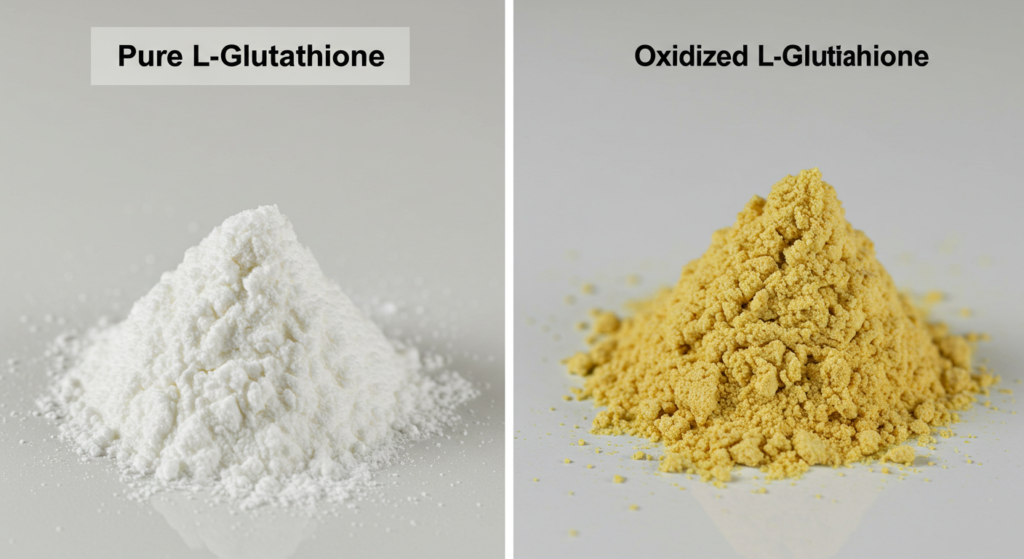Introduction
With the growing demand for glutathione powder across health, nutrition, and skincare sectors, counterfeit and degraded products are increasingly common in the global market. From low-grade substitutes to oxidized variants labeled as “pure glutathione,” buyers are often at risk of receiving ineffective or non-compliant materials. This article explains how to verify the authenticity of glutathione powder through physical cues, documentation, and third-party testing.
What Makes Glutathione Susceptible to Degradation?
Glutathione is highly sensitive to heat, moisture, light, and oxygen. Particularly in its reduced form (GSH), it easily oxidizes into GSSG (oxidized glutathione), which diminishes its antioxidant function.
- Storage in poor conditions accelerates degradation
- Repacking in non-airtight containers reduces stability
- High humidity causes clumping and discoloration
Common Adulteration Practices and Risks
Some common counterfeit practices include:
- Mixing glutathione with maltodextrin, ascorbic acid, or talc
- Selling oxidized glutathione labeled as reduced (GSH)
- Using outdated or copied COAs
- Repackaging expired powder in new bulk bags
These practices may lead to ineffective formulas, failed stability tests, or regulatory violations.
Visual and Physical Signs of Low-Quality Powder
Examine the powder carefully before use:
- Color: Pure glutathione powder is bright white. Yellowing indicates oxidation.
- Clumping: Sticky or moist appearance may indicate poor storage or high humidity.
- Smell: A sharp sulfur smell is normal; absence may signal dilution.

Verifying Authenticity Through COA and Lab Testing
Always request the Certificate of Analysis (COA) and validate the following:
- HPLC test results showing ≥98% purity
- Microbial and heavy metal analysis from certified labs
- Check if the lab is ISO 17025 accredited
- Avoid COAs that use only UV spectrophotometry
🔗 Link to: How to Read and Validate a COA
What Questions to Ask Your Supplier
Before placing an order:
- Do you provide batch-specific COAs?
- When was the powder last retested?
- What is your primary detection method (HPLC vs. UV)?
- Can you offer third-party validation?
- How do you package to prevent oxidation?
📌 Tip: Ask for small trial samples and compare visually across batches.
Conclusion: Build a Trustworthy Supply Chain
Ensuring the authenticity of glutathione powder begins with awareness and reliable quality control practices. By learning to spot visual inconsistencies, demand robust documentation, and ask the right questions, buyers can significantly reduce risk and protect their end-products.
To learn more about L-Glutathione knowlege, refer to our article on The Ultimate Guide to Glutathione Powder